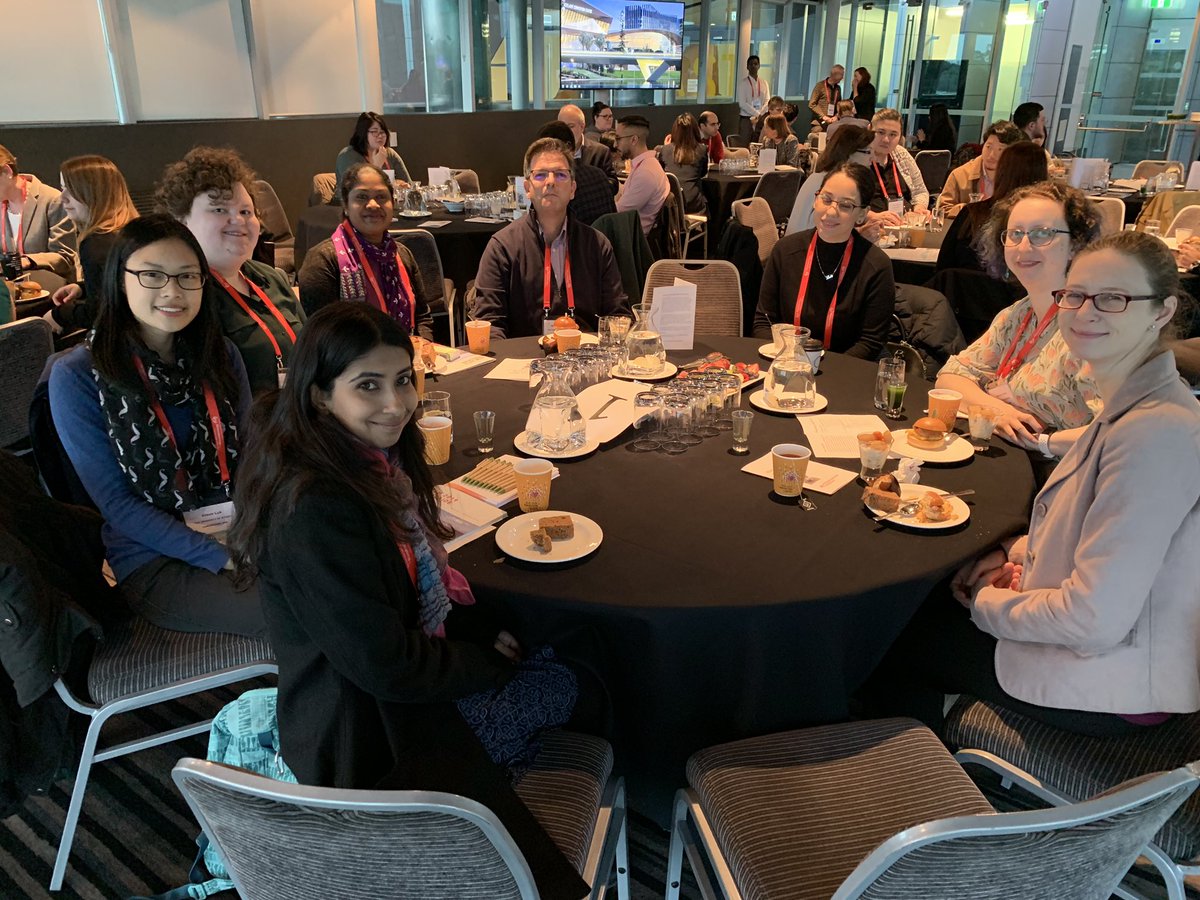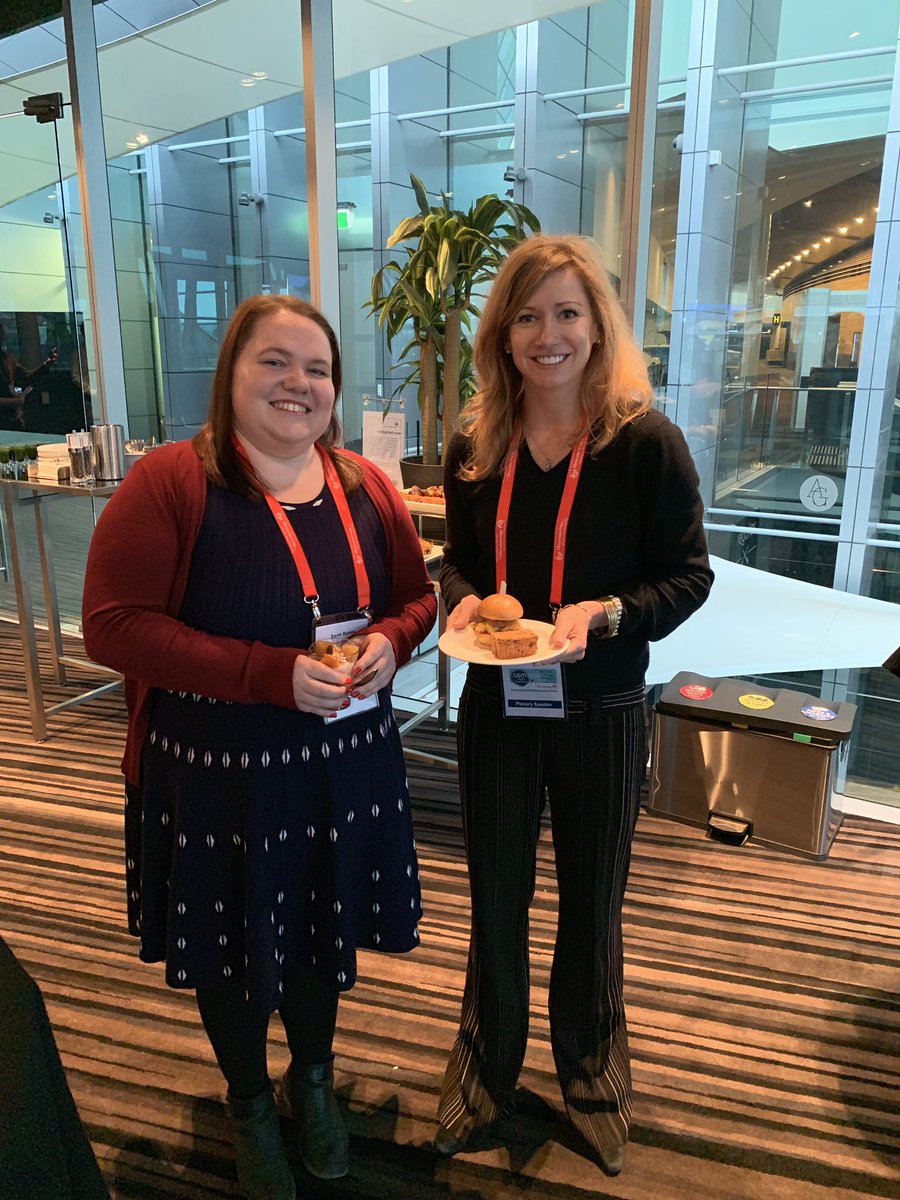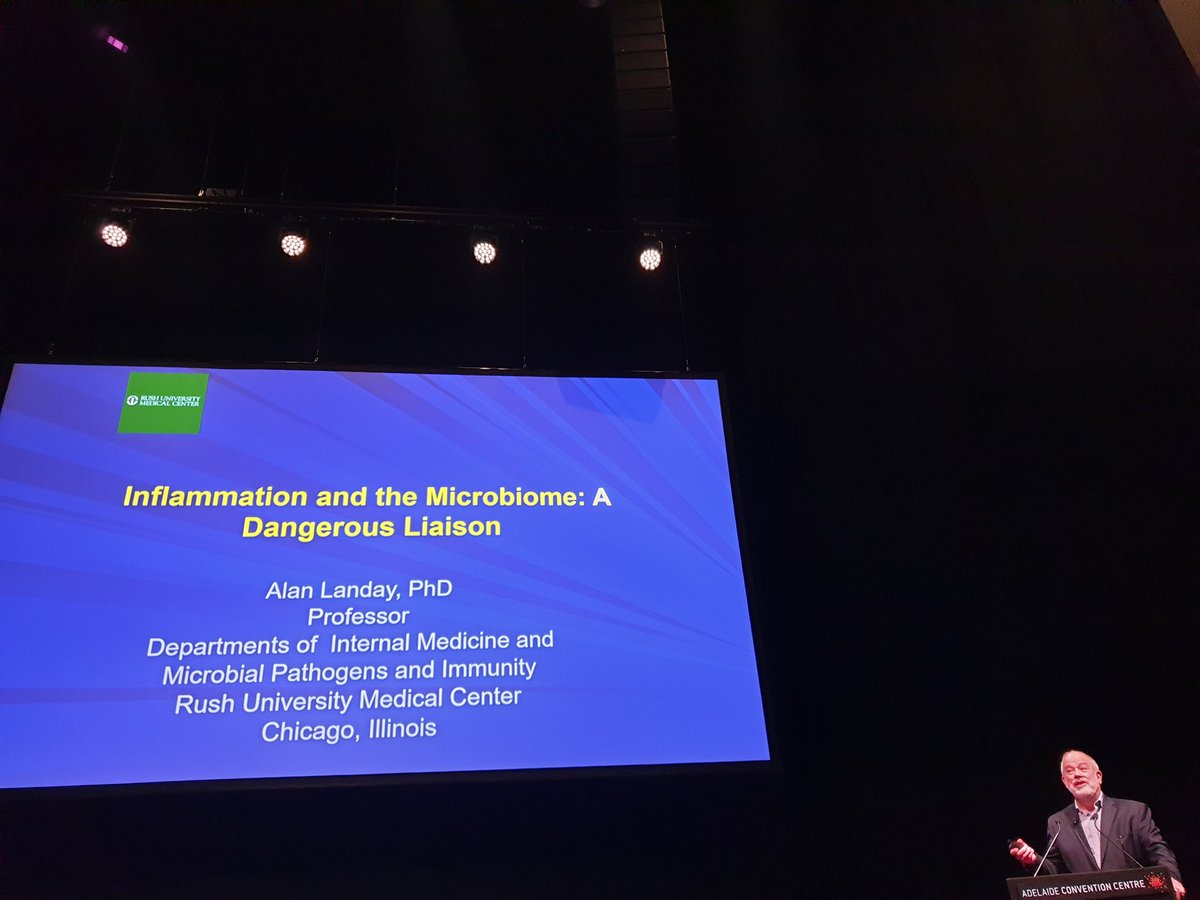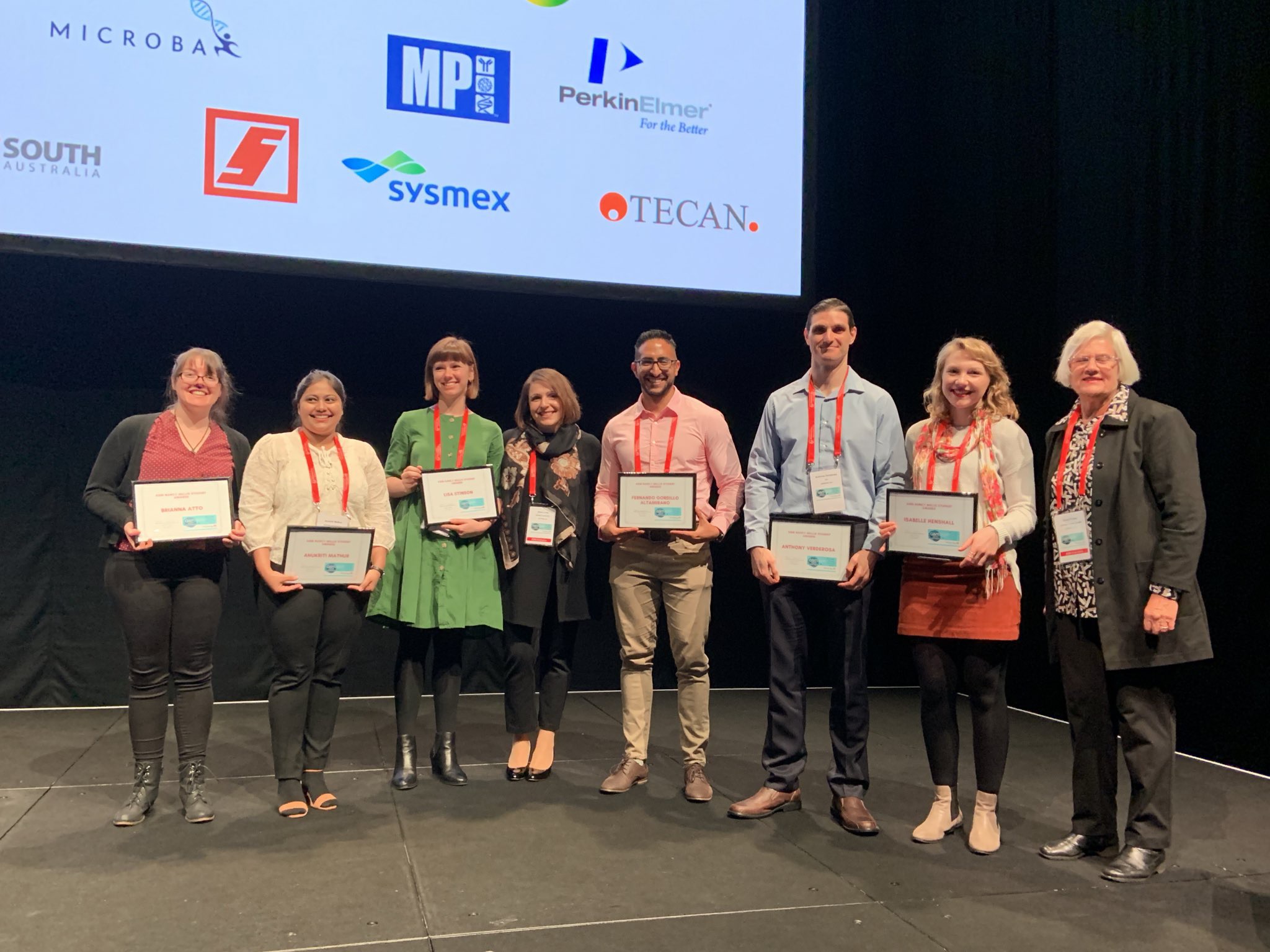ASM 2019 Adelaide: Day two
Day two started early for those attending the Nancy Millis Mentoring breakfast. The breakfast, and later student and ECR lunch, are named in honour of Professor Emeritis Nancy Millis - a woman in STEM, mentor to young scientists, and educator dedicated to students. In this spirit the breakfast and lunch events bring together students and ECRs with our local and international plenary speakers.
“Loved chatting to Prof. Karen Carroll from @HopkinsMedicine at the Nancy Millis student mentoring breakfast… She reminds us to enjoy the journey of research, celebrate milestones and take our time in achieving our goals” - Stacey Hong
Our first sessions included microbes that changed the world, microbial vaccines and immunology, microbiome in health and disease, and the molecular and cell biology of microbes. This was followed by our first plenary of the day, delivered by Alan Landay from Rush University. Alan spoke on inflammation and the microbiome: a dangerous liaison. He described the need to understand the landscape of the gut microbiome before being able to investigate its role and relationships with infections such as HIV.
"What happens in the gut, doesn't stay in the gut"
There is a high correlation between gut microbiota metabolites and cardiovascular disease in HIV patients. Metabolomics is important in identifying the relationship between gut bacteria and the host immune system. Diet appears a critical factor, and there is a role for probiotics, postbiotics, synbiotics & fecal transplants.
Karen Carroll, John Hopkins University School of Medicine, described how it is an exciting time to be a clinical microbiologist. Her interesting talk covered the current trends and emerging technologies in diagnostic microbiology, including total lab automation and AI.
After lunch our six ASM Nancy Millis student award recipients proved they were the “best of the best” from their branches. Brianna Atto from Tasmania presented on a haem as a potential respiratory probiotic for preventing infections by Haemophilius influenza. Anukriti Mathur from NSW described a Bacillus cereus toxin activating the human inflammosome.
Lisa Stinson from WA explained how she took amniotic fluid and muconium to investigate the problematic question of whether there is a fetal microbiome. And Fernando Gordillo presented on Acinetobacter bamanni and its loss of antimicrobial resistance when faced with phage. Representing QLD, Anthony Verderosa described how nitroxides may be used to penetrate and disperse S. aureus biofilms. And the final speaker, Isabelle Henshall from SA/NT, discussed her work looking at potential candidates for vaccine development at the red blood cell invasion stage of malarial infection. A great collection of work that was spectacularly presented by all.
Talks from our ASM Frank Fenner Award recipients, Martina Sanderson-Smith, on Group A Streptococcal interactions with the host, and Maria Liaskos, on immune modulation by H. pylori outer membrane vesicles, followed. ASM Jim Pittard Award recipients Mohammad Hamidian, who works characterising global expansions of antibiotic resistance in A. baumannii, and Chris Greening, who fascinated us with dormant bacteria that live “on air” by remodelling their proteome to utilise the trace gases hydrogen and carbon monoxide. Following this delegates were again treated to food and drinks while networking and chatting with poster presenters.







